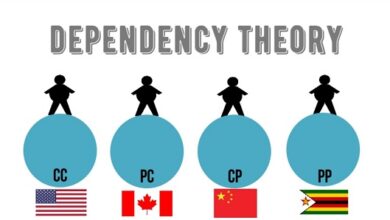What is Differential reinforcement how it is used in psychology
In behavior modification techniques, we find a wide variety of strategies to increase, reduce, or eliminate behavior. An important strategy is reinforcement, which encompasses all procedures that increase the likelihood that a behavior will occur.
In this article , we’ll talk about one type of reinforcement, differential reinforcement , designed to eliminate or reduce behaviors while improving others. We will know the five existing types, their characteristics, how they are applied and examples of each one of them.
Differential reinforcement: what is it?
Differential reinforcement is a type of learning characteristic of behavior modification techniques (behavioral psychology), which consists of reinforcing only some behaviors while others are extinguished (they stop being reinforced to extinguish them) or to reinforce certain behaviors after certain periods of time, etc.
As we will see, there are five types of differential reinforcement, depending on the objective we have, and their characteristics are very diverse.
What is reinforcement?
It is important to understand differential reinforcement that the concept of reinforcement be clear. Reinforcement implies administering a positive stimulus or withdrawing a negative stimulus when a certain action is performed , which increases the probability of the occurrence of a certain behavior. For example, a reinforcer could be a compliment (verbal reinforcement), a cookie (primary reinforcement), a touch (social reinforcement), an afternoon at the movies, more time watching TV, more time with friends, etc.
Types, with examples
There are several types of differential reinforcement , depending on their characteristics and what they are trying to achieve:
1. High rate differential reinforcement (RDA)
In this type of reinforcement, the response will be reinforced if less than a certain time has passed since the previous response . That is, what is sought is for the answer to increase its appearance rate and appear more often.
RDA example
An example that illustrates an RDA is a teenager who has difficulty being assertive (i.e., has difficulty speaking her mind, saying “no”, standing up for her rights, etc.). In this case, the way to apply a high-rate differential reinforcement will be to reinforce the adolescent if, in period “X”, he has been assertive at certain times , that is, if there is little time between assertive behaviors.
So, in this case, assertive behavior would be, for example, saying “no” to a request for a favor we don’t want to do or saying a personal opinion against what the majority thinks, in order to defend a personal interest. , etc.
limited response RDA
RDA has the following subtype, called limited-response differential reinforcement. In this process, the subject is reinforced if the answer appears at least “X” times during a certain period of time .
2. Low Rate Differential Boost (RDB)
This second type of reinforcement is opposite to RDA. In this case, the response is reinforced if a certain time has elapsed since the previous response. That is, what is intended is for the behavior to reduce its frequency , decrease and appear more spaced in time.
Thus, this type of reinforcement is indicated for cases in which the objective is not to eliminate the behavior, but to reduce its frequency. These may be cases where the conduct itself is not harmful (but rather its frequency of occurrence), or cases where the conduct cannot be completely eliminated (or it is difficult to achieve the complete disappearance of the conduct).
RDB example
Let’s look at an example to illustrate the RDB: let’s think about a child with ADHD (Attention Deficit Hyperactivity Disorder) who gets up from the table many times during the whole class. In this case, we reinforced each time the period “X” elapsed (for example, 15 minutes) without performing the action of getting up.
According to what we said before, what is sought here is for the child to get up less often throughout the class. In this example, getting up by itself is not inappropriate behavior, but doing it too often is.
Limited response to RDB
Like RDA, low-rate differential reinforcement also has the following subtype: the limited-response RDB. In this case, a response smaller than “X” is allowed in a given period of time and is reinforced if it is reached . That is, the subject is reinforced by the emission of less than a certain number of behaviors in a specific period of time.
3. Differential reinforcement of other behaviors (RDOC)
Differential reinforcement of other behaviors, unlike the two previous ones, has a dual and simultaneous objective : to decrease the occurrence of certain behaviors and increase the occurrence of others. It is indicated for cases where it is necessary to replace the original behavior with a more adequate or functional behavior.
In this case, the “other behaviors” that the reinforcement name refers to refer to behaviors that are functionally equivalent to the behavior we want to reduce, but more adaptable.
RDO example
For example, this type of reinforcement can be applied to a child who, instead of talking, uses screams to ask for things; in this case, we reinforce the child every time he asks for things well, when he asks for them speaking and without raising his voice; on the contrary, we don’t reinforce him when he asks for things by shouting. Thus, we would be applying differential reinforcement, as we reinforce some behaviors and not others.
4. Differential Reinforcement of Incompatible Behaviors (IDI)
This type of differential reinforcement is very similar to the previous one; In this case, we have a behavior that we want to decrease or eliminate directly (inappropriate behavior). How would we apply the procedure? Not reinforcing such inappropriate behavior, nor reinforcing behaviors incompatible with inappropriate behavior (the latter being appropriate behaviors).
RDI example
An example of this type of procedure would be reinforcing a child who, instead of hitting, does a craft. These are behaviors you can’t do at the same time, because they both involve using your hands (ie, they’re incompatible behaviors). Also, while the first (paste) is inappropriate, the second (performs a craft) is appropriate.
On the other hand, an advantage of RDI is that incompatible behaviors can be more than one (so we also increase the behavioral repertoire of appropriate behaviors); thus, the objective will be to increase the frequency of appropriate responses and extinguish inappropriate responses.
5. Differential Hop Enhancement (RDO)
In differential reinforcement of omission, the subject is reinforced if the response does not appear within a certain period of time . That is, the absence of the answer or the omission of it is rewarded. The goal is for the behavior to decrease in terms of appearance frequency.
RDO example
To illustrate this type of differential reinforcement, we can think of certain aggressive behaviors, personal harm, etc. In this case, the non-emission of such behaviors will be reinforced (eg blows, automatic injuries, insults, etc.). That is, it is applied to inappropriate behavior that we want to eliminate .
If the application of RDO is effective, we will have an ideal scenario to establish an alternative and adaptive behavior, since the maladaptive behavior will have disappeared.




